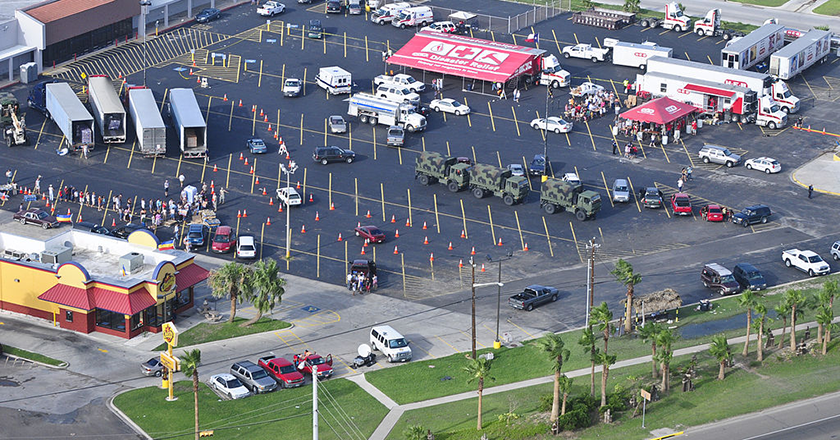Every organization has had to work around the COVID-19 pandemic in 2020. And by now it’s clear that the pandemic will also be a central part of 2021.
And while the pandemic will leave its footprint on 2021, hopefully it will stop there. Some experts predict that there will be widespread availability of a COVID-19 vaccine by the end of 2021.
That vaccine will need to be distributed, and local organizations may be tapped to help out. Colleges and universities may be part of that cohort. Participating schools will need to run points of distribution (PODs) to accomplish this. And if a school’s staff is unfamiliar with this type of operation, a practice run is worth their time.
The Impact of COVID on Higher Education
Industries across the world have been affected in their own unique ways by the pandemic. For higher education, there’s no exception. Colleges and universities are working to not only understand the pandemic, but respond to its presence within their communities and student populations.
Initially, institutes of higher education closed their campuses and moved to online classes in response to the pandemic. They continued this through the Spring 2020, and hashed out their plans for the Fall 2020 semester over the summer.
Some schools have maintained their virtual formats from the spring semester, some have shifted to hybrid models, and others have brought students back to campus and bolstered COVID-19 mitigation operations.
In a way, the response of colleges and universities mirrored what we did as a community to respond to the coronavirus. We all locked down initially, figured out what needed to be done, and have implemented strategies and policies to curb the spread of the virus.
Now, as we’re approaching a possible availability of a vaccine, we need to figure out how to distribute it. The CDC has issued instructions to relevant parties, and states have started to develop their own phased approaches to distribution.
Points of distribution (PODs) will be essential parts of the effort. And while professionals are capable of picking up these operations from scratch, it’s best that they practice with exercises to ensure the whole operation goes as smoothly as possible.
If our local municipalities, state governments, agencies, and healthcare centers are preparing to run vaccine PODs, it may not be offbeat to assume colleges and universities may stand up these operations.
Higher Education and PODs
If and when that vaccine does become available, it will still need to be distributed. Colleges and universities across the country may be expected to help administer the vaccine in their communities; at the very least, schools may be expected to at least administer the vaccine for their student populations as the Fall 2021 semester kicks off.
It’s no guarantee this will be expected of colleges and universities. It all depends on a vaccine becoming available by August or September 2021, which is no guarantee either. But because there is a strong possibility, schools should start planning how they’ll get the medicine to the communities they’re responsible to.
Colleges and universities won’t be able to give out a vaccine without running PODs. The fact that schools will have to run PODs, however, doesn’t mean they have the experience. Exercises, then, are crucial to getting school staff — and other stakeholders — familiar with this type operation.
Running PODs and Exercises
Like any other exercises, a POD exercise should familiarize its potential real-world participants with its core pieces and the responsibilities each role has.
A college or university should ensure their POD exercises incorporate stakeholder coordination, the use of various communications channels and notifications, inventory management, supplies tracking, and personnel management. All are essential to a well-run point of distribution, and especially one that many have to run quickly and meet the requirements of a large population relying on their services.
A lot of personnel, especially in the case of a POD that’s a part of a COVID-19 response, will be involved. This includes the personnel running the site, administration and management, and players in the supply chain. An exercise should introduce all stakeholders to means of coordinating with their team players.
Doing this will help each participant understand their role, their responsibilities, and how they can communicate with other stakeholders involved in the exercises (and an eventual real-world response).
Inventory management is arguably the most important cog in the POD machine. As a team, a school should ensure that participants know how to track inventory and interact with existing technology. Monitoring and reporting should be baked in as well, and an exercise should ensure personnel know how to access and understand the reporting tools your organization is using.
In this specific case, schools should ensure their team is keeping an eye on not only the vaccine numbers, but personal protective equipment (PPE) stocks as well. The COVID-19 necessitates extreme health precautions be taken, and exercises should reflect this.
Personnel management will be another key part of any response, and an exercise as a result. A real-world response will most likely require shifts from personnel; while exercises are abbreviated, teams should make an effort to replicate this aspect of a response. Information needs to be transferred at each shift change, which an exercise should, again, help personnel develop the muscle memory for.
Getting Ready
The COVID-19 pandemic won’t end once a vaccine is available. It’ll take time to distribute, and a lot of parties will be asked to help, a group that may include institutes of higher education. Exercises will be the best way for schools to prepare and get their teams ready to perform these critical operations in 2021.








